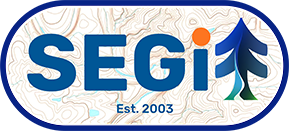Development & Permitting
Working with the federal and state's regulatory agencies
Many of our services combine to support commercial, residential, and private development projects. We ensure your project is compliant with current regulations and help you reduce or eliminate harm to our environmental community.
When working with federal and state agencies, especially regarding environmental matters such as wetland delineations, permitting, and other regulatory processes, it’s essential to understand the roles and responsibilities of each agency involved. Here’s a general overview of how to effectively collaborate with these agencies:
1. Identify Relevant Agencies:
- Determine which federal and state agencies have jurisdiction over the specific project or activity you’re involved in. This could include agencies responsible for environmental protection, natural resource management, land use planning, or infrastructure development.
2. Establish Communication Channels:
- Reach out to the appropriate agency representatives to introduce your project and discuss regulatory requirements, permitting processes, and any potential concerns or constraints.
- Maintain open and transparent communication throughout the project lifecycle, providing updates, addressing questions or issues promptly, and seeking guidance as needed.
3. Understand Regulatory Frameworks:
- Familiarize yourself with relevant federal and state laws, regulations, and policies governing environmental protection, land use, water resources, and other relevant areas.
- Ensure compliance with applicable regulatory requirements, including permitting procedures, environmental impact assessments, mitigation measures, and monitoring obligations.
4. Collaborate on Permitting Processes:
- Work closely with agency staff to navigate permitting processes, submit permit applications, and address any deficiencies or additional information requests.
- Provide comprehensive project documentation, environmental assessments, and mitigation plans to support permit review and decision-making.
5. Seek Technical Assistance and Guidance:
- Utilize agency resources, technical guidance documents, and online tools to assist with project planning, environmental assessments, and compliance activities.
- Engage agency experts and consultants as needed to address complex technical issues, conduct specialized studies, or develop mitigation strategies.
6. Participate in Public Consultation and Review:
- Participate in public hearings, stakeholder meetings, and regulatory review processes to solicit feedback, address concerns, and demonstrate public engagement and support for the project.
- Respond constructively to public comments, incorporating feedback where feasible and providing rationale for decisions when modifications are necessary.
7. Maintain Compliance and Monitoring:
- Implement approved mitigation measures, monitoring protocols, and reporting requirements as outlined in permit conditions.
- Conduct regular inspections, environmental monitoring, and compliance assessments to ensure ongoing adherence to regulatory requirements and permit conditions.
8. Foster Positive Relationships:
- Build and maintain positive working relationships with agency staff, stakeholders, and community members based on mutual respect, trust, and collaboration.
- Recognize the expertise and responsibilities of agency personnel, and strive to find common ground and solutions that meet both regulatory objectives and project goals.
By effectively engaging with federal and state agencies and adhering to regulatory requirements, you can facilitate successful project outcomes while promoting environmental stewardship and regulatory compliance.

